 | |
| Place of origin | Belgium, United Kingdom |
|---|---|
| Main ingredients | Sherbet and rice paper |
Flying saucers (Flemish : Zure ouwels) are small spheroidal capsules of sherbet-filled rice paper. [1] [2]
 | |
| Place of origin | Belgium, United Kingdom |
|---|---|
| Main ingredients | Sherbet and rice paper |
Flying saucers (Flemish : Zure ouwels) are small spheroidal capsules of sherbet-filled rice paper. [1] [2]
The first flying saucers were produced in the early 1950s when an Antwerp-based producer of communion wafers, Belgica, faced a decline in demand for their product. Astra Sweets now owns the Belgica brand and continue to make the product. Flying saucers are officially registered as a traditional product of Flanders. [3] Their popularity in the United Kingdom from the 1960s to the 1970s was attributed to the Space Race and increased interest in science fiction. [2]
They remain a popular sweet in Belgium and the United Kingdom. Flying saucers came 12th in a 2009 poll among adults for 'Britain's top sweets' [4] and experienced a resurgence in popularity, along with other traditional sweets, in the 2010s. [5] [6] They have also been featured on lists of vegan sweets for Halloween. [7] They were also a popular sweet in Ireland. [8]

Dessert is a course that concludes a meal. The course consists of sweet foods, such as candy, and possibly a beverage such as dessert wine and liqueur. Some cultures sweeten foods that are more commonly savory to create desserts. In some parts of the world there is no tradition of a dessert course to conclude a meal.
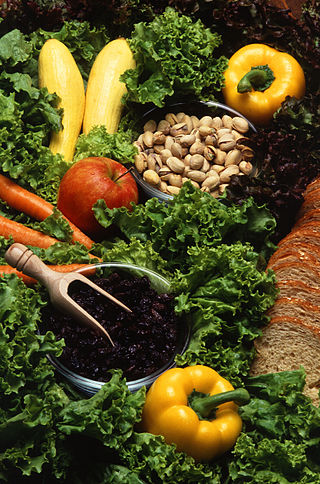
Vegetarian cuisine is based on food that meets vegetarian standards by not including meat and animal tissue products.

Cannoli are Sicilian pastries consisting of tube-shaped shells of fried pastry dough, filled with a sweet, creamy filling containing ricotta—a staple of Sicilian cuisine. They range in size from 9 to 20 centimetres. In mainland Italy, they are commonly known as cannoli siciliani.
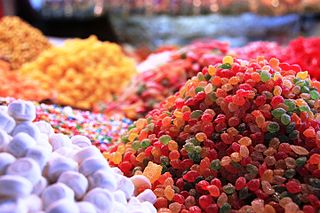
Candy, also called sweets (BrE) or lollies, is a confection that features sugar as a principal ingredient. The category, called sugar confectionery, encompasses any sweet confection, including chocolate, chewing gum, and sugar candy. Vegetables, fruit, or nuts which have been glazed and coated with sugar are said to be candied.

A wafer is a crisp, often sweet, very thin, flat, light biscuit, often used to decorate ice cream, and also used as a garnish on some sweet dishes. Wafers can also be made into cookies with cream flavoring sandwiched between them. They frequently have a waffle surface pattern but may also be patterned with insignia of the food's manufacturer or may be patternless. Some chocolate bars, such as Kit Kat and Coffee Crisp, are wafers with chocolate in and around them.

Banana bread is a type of sweet bread made from mashed bananas. It is often a moist and sweet quick bread but some recipes are yeast raised.

Monaka (最中) is a Japanese sweet made of azuki bean paste sandwiched between two thin crisp wafers made from mochi. The wafers can have the shape of a square, a triangle, or may be shaped like cherry blossoms, chrysanthemums, and so on.
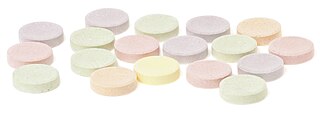
In the United States, Smarties are a type of tablet candy produced by Smarties Candy Company, formerly known as Ce De Candy Inc., since 1949. Smarties are produced in factories in both Union Township, New Jersey, and Newmarket, Ontario. The candies distributed in Canada are marketed as Rockets, to avoid confusion with Smarties, a chocolate candy produced by Nestlé which owns the trademark in Canada. The New Jersey factory produces approximately 1 billion rolls of Smarties annually, and in total the company produces over 2.5 billion in a year.
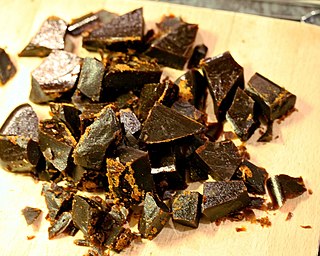
Bonfire toffee is a hard, brittle toffee associated with Halloween and Guy Fawkes Night in the United Kingdom. The toffee tastes very strongly of black treacle (molasses), and cheap versions can be quite bitter. In Scotland, the treat is known as claggum, with less sweet versions known as clack. In Wales, it is known as loshin du. The flavour is similar to that of butterscotch, although it is a toffee and never a viscous liquid.
George Bassett & Co., known simply as Bassett's, was a British confectionery company and is now used as a brand of Cadbury, owned by Mondelēz International. The company was founded in Sheffield by George Bassett in 1842. Perhaps the company's best-known sweets, the Liquorice Allsorts, were created by accident in 1899 and in 1926 the mascot of Bassett's, Bertie Bassett, was created; Bertie continues to represent the brand today. Jelly Babies have been produced by the brand since 1918. In 2016, the brand was joined with Maynards to create Maynards Bassetts.
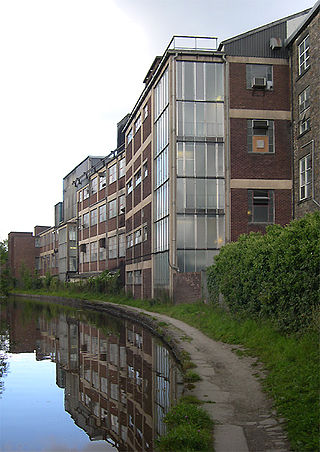
Swizzels Matlow Limited, branded as Swizzels, is a confectionery manufacturer based in New Mills, Derbyshire, near Stockport in the United Kingdom. The company had revenues of £47 million in 2010/11. It employs around 600 people. Swizzels Matlow exports 20 per cent of its sweets to more than 20 countries, mostly in Europe. Their highest selling brands are Love Hearts, Parma Violets and Drumstick lollies. Its biggest sales period is Halloween.

Percy Pig is a British brand of pig-shaped gummy raspberry, strawberry, cherry and grape-flavoured confectionery products made under licence in Germany by Katjes for Marks & Spencer which first appeared in stores in 1992. More than £10 million was grossed between June 2009 and 2010 in Percy Pig sales in Marks & Spencer's UK branches alone. They contain just under 3.5% fruit juice and since May 2022 have been suitable for vegans.

Sherbet is a fizzy, sweet powder, usually eaten by dipping a lollipop or liquorice, using a small spoon, or licking it from a finger.

Hope and Greenwood is a traditional confectionery business based in London, England.

Muhallebi is a milk pudding commonly made with rice, sugar, milk and either rice flour, starch or semolina, popular as a dessert in the Middle East. While the dessert is called Muhallebi in Turkey and Iraq, the Egyptian variant is called mahalabia, the levantine variant is called mahalabiyeh.

Sharbat is a drink prepared from fruit or flower petals. It is a sweet cordial, and usually served chilled. It can be served in concentrated form and eaten with a spoon or diluted with water to create the drink.

Macun is a soft, sweet and colorful Turkish toffee paste. It is a street food that may be prepared with many herbs and spices. Macun originated from spicy preparations of Mesir macunu, a traditional Turkish herbal paste from the classical antiquity period. During classical antiquity, macun was consumed as a pharmaceutical medicine. It was historically served in a round tray with separate compartments for the various flavors, a serving style that has continued into modern times. The consumption of macun is a part of some Turkish customs.

Winter ice cream is a Hungarian confectionery similar in appearance to ice cream in a cone, but traditionally having ganache or a similar kind of sweet cream filling with usually a chocolate-cocoa flavoring. It gained popularity in the 1970s in communist Hungary, being produced as a winter alternative to "summer" ice creams, which were deemed to be too cold for winter sweets. Apart from grocery shops, it was frequently sold as part of the national railway's catering service. The confectionery's popularity faded in the early 1990s, when, after the end of communism, foreign candy manufacturers and their products appeared on the Hungarian market. However, along with some other snack foods and soft drinks of communist-era Hungary, winter ice cream garnered renewed interest in the late 2000s and 2010s.

Raindrop cake is a dessert made of water and agar that resembles a large raindrop. It first became popular in Japan in 2014 and later gained international attention.